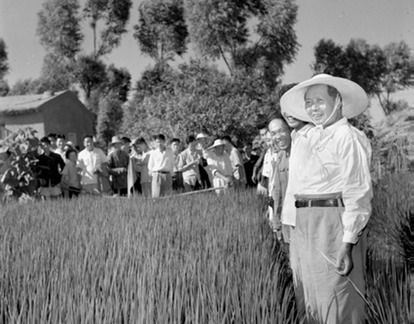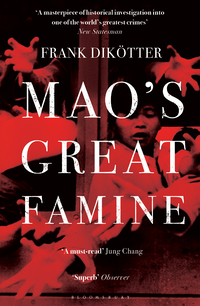Christian Science Monitor, 2 November 2010
Historian Frank Dikötter pieces together an astounding portrayal of the human suffering behind China’s ‘Great Leap Forward.’
In the late 1950s, thousands of Chinese farmers starved to death while toiling on massive irrigation projects, under orders to meet Mao Zedong’s outlandish expectations for growth. Most laborers didn’t speak up because they feared the authorities would label them rightists.
Under the “Great Leap Forward,” as Mao called it, China was supposed to be able to catch up to Britain’s steel production in 15 years – an utterly unrealistic goal which led to a horrific famine and crisis. Villagers in one northern province called the projects “The Killings Fields,” an eerie presage of Pol Pot’s Cambodia. Heaps of bodies were dumped into ditches – as the world would later see done by the Khmer Rouge.
In Mao’s Great Famine, historian Frank Dikötter assembles a treasure chest of these historic facts, but more important, he strokes them together into a masterly and memorable story. He unearths astounding evidence of the violence carried out in the name of Maoism from 1958 to 1962 – a tragedy whose scope has been uncertain until recently, because the party had revealed its documents only to their most trusted historians.
A new archive law in China, however, has opened up access to thousands of government documents. Dikötter relied heavily on those mostly provincial records, piecing together a picture of the political manipulation at the top and human toll at the bottom.
He claims that many scholars may have underestimated the range of deaths at 15 million to 32 million, because they relied on sparse information based on census figures. Dikötter, on the other hand, places the number of unnecessary deaths in those four years at 45 million or more.
At the apex of the party, he casts Mao Zedong as a rambling egomaniac indifferent to human deaths and obsessed with protecting his own image. Many of his policies were bizarre, such as when he exported food to the Soviet Union and pushed villagers to eat five bowls of rice a day – all despite the country’s famished conditions.
His close comrades, meanwhile, are portrayed as back stabbers, cajoling their way into the chairman’s favor by whipping up support from other senior leaders. As the orders trickled down to provinces and villages, “ferocious purges were carried out, as lacklustre cadres were replaced with hard, unscrupulous men,” he writes.
The brutality stretched to the starving villagers and factory workers throughout China. For example, when a boy stole a handful of grain, local boss Xiong Dechang forced the child’s father to bury him alive. Ordinary people and government officials often survived on stolen food, while inflating their production numbers to please party inspectors.
Yet Dikötter is careful not to romanticize those petty thefts, a mistake, he argues, that some scholars have made. “When farmers hid the grain, the workers outside the village died of hunger. When a factory employee added sand to the flour, somebody down the line was chewing grit,” he writes. “To romanticize what were often utterly desperate ways of surviving is to see the world in black and white, when in reality collectivization forced everybody ... to make grim moral compromises.”
Dikötter admits that he, along with other historians, still can’t paint a full picture of what was said and done in the corridors of power. This is because the Central Party Archives in Beijing remain closed, and probably won’t be opened in the near future.
Mao’s Great Famine nonetheless ranks among the best documentation available on the Great Leap Forward, ever since Jasper Becker published Hungry Ghosts in 1996. Dikötter’s gruesome imagery may smack readers hard, but he certainly gets his message across.

